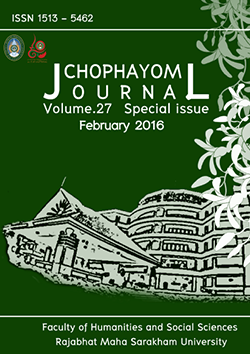Improving Basic English For Communication Of Rajabhat Maha Sarakham University Students In Preparation For Asean By Using The Teaching-Learning Cycle Model
Abstract
The objectives of this research were to design a basic English curriculum for communication
of students at Rajabhat Maha Sarakham University based on the 70/70 standardized criteria
efficiency, to compare the English competency of the students, and to survey the satisfaction of
the trainees with the English training curriculum.The research methodology consisted of 3
steps: 1) curriculum design and development, 2) curriculum implementation and 3) evaluation.
The population was 225 students from 5 programs: Thai, Hotel and Tourism, General Management,
Biology, and Public Administration who took the English test and participated in the foreign
language training project offered in 2013 by the Office of International Relations and International
Education, Rajabhat Maha Sarakham University. The sample was twenty nine students from the
Biology Program, Faculty of Science and Technology, and they were selected by the purposive
random sampling method. The research instruments were a aasic English curriculum for
communication consisting of 10 lessons, an English test, 10 lesson plans, an evaluation form for
IOC, and a form evaluating the appropriateness of the curriculum, as well as a questionnaire. The
research statistics used were percentage, mean, standard deviation, and the t-test (Dependent
Samples). The research findings showed that the index of the standardized criteria efficiency was
72.83/70.34%. The findings also indicated that the average score of the post-test of the students
was significantly higher than that of the pre-test at the .05 level. Additionally, the average level
of the trainees’ satisfaction of with the training curriculum was high (X = 4.12). In conclusion, the
findings indicate that the training curriculum is practical for human resource development in
English language competency






